Disclosure: This article contains affiliate links. We may earn a commission from purchases at no extra cost to you, which helps our travel content.
The morning air in Durban carries a symphony of scents – cardamom, cloves, curry leaves, and the unmistakable oceanic breeze that reminds you you're in a coastal city. As I step into Victoria Street Market, I'm struck by how this space represents a microcosm of South Africa's complex history and vibrant present. Markets have always been more than commercial spaces to me; they're living archives of cultural adaptation, resilience, and innovation. In my work across climate-vulnerable regions, I've found that traditional marketplaces often hold the keys to sustainable practices that modern economies are desperately trying to rediscover. Here in Durban, where Indian, Zulu, and colonial influences have created something entirely unique, the markets tell stories of migration, survival, and the beautiful chaos that emerges when different worlds collide. He aha te mea nui o te ao? He tangata, he tangata, he tangata – What is the most important thing in the world? It is people, it is people, it is people. This Māori proverb echoes in my mind as I prepare to introduce you to the beating heart of Durban's commercial culture.
Victoria Street Market: A Phoenix Risen from Ashes
Victoria Street Market stands as a testament to resilience. After a devastating fire destroyed the original Indian Market in 1973, this phoenix rose from the ashes, continuing a tradition of trade that dates back to the 1870s when the first Indian indentured laborers arrived in Natal.
The distinctive red-brick building with its ornate minarets and arches houses over 170 stalls spread across two floors. As I wander through the ground floor, the scent of spices is almost overwhelming – towers of bright yellow turmeric, deep red chili powder, and aromatic masala blends create a sensory experience that transports me back to Mumbai's Crawford Market.
What strikes me most is the preservation of traditional knowledge in these spice stalls. Speaking with Priya, a third-generation spice merchant, I learn how climate change has affected certain spice harvests in India, changing supply chains that have existed for generations. Yet here, the knowledge of blending, storing, and using these spices remains intact – a cultural heritage preserved despite global environmental shifts.
The upper floor reveals a treasure trove of crafts, textiles, and souvenirs. I'm particularly drawn to the beadwork that reflects Zulu artistry – intricate patterns that tell stories and preserve cultural identity. I purchase a beaded bracelet from a woman who explains how each color and pattern carries meaning, a silent language I'm only beginning to understand.
Before leaving, I find myself at a stall selling incense and essential oils. The vendor notices my interest in a particular sandalwood blend and explains its traditional use in meditation practices. I leave with a small bottle, wrapped carefully in newspaper – a fragrant reminder of this vibrant marketplace.
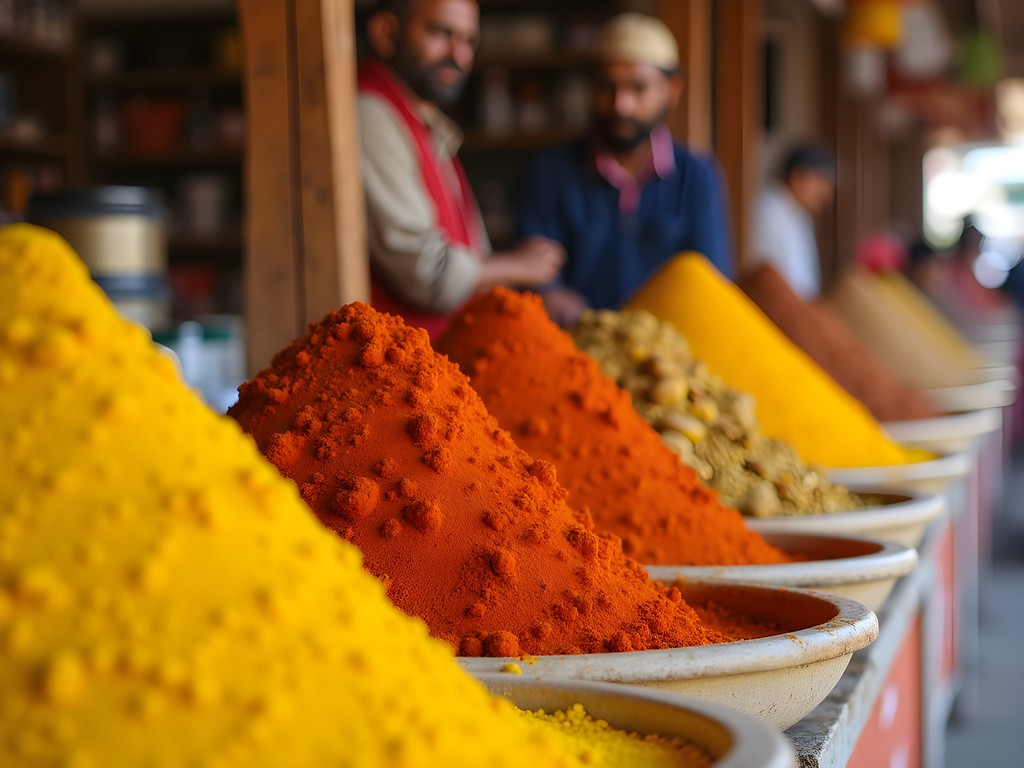
💡 Pro Tips
- Visit early morning (around 8-9am) for the freshest produce and fewer crowds
- Bring cash as many smaller vendors don't accept cards
- Don't be afraid to bargain, but do so respectfully – it's part of the culture
Navigating Warwick Junction: Nine Markets in One
Warwick Junction represents something truly extraordinary – nine distinct markets operating in a single transport hub that serves half a million commuters daily. This is urban adaptation at its most organic and ingenious, a place where formal and informal economies blur into a symphony of commerce that sustains thousands of families.
My journey begins at the Bead Market, where I'm mesmerized by the rainbow of tiny glass beads that will eventually become elaborate ceremonial attire and everyday accessories. A craftswoman named Nomsa shows me how she creates intricate patterns that have been passed down through generations of her family. The preservation of this art form despite modernization speaks volumes about cultural resilience.
The Bovine Head Market offers a glimpse into traditional Zulu cuisine, where nothing goes to waste – a sustainability practice embedded in culture long before the term became fashionable in environmental circles. Though not for the squeamish Western traveler, this market represents food sovereignty and cultural continuity.
Perhaps most fascinating is the Traditional Medicine Market, where over 700 healers and traders offer indigenous remedies. As someone working at the intersection of traditional knowledge and modern environmental challenges, I find this space particularly compelling. Muthi traders explain how certain plants are becoming harder to source due to changing rainfall patterns – a direct consequence of climate change that threatens both biodiversity and cultural practice.
Navigating these spaces requires respect and awareness. I'm mindful of when to photograph and when to simply observe. My crossbody bag stays close to my body, allowing me to move through crowded spaces while keeping my essentials secure. For serious market exploration in bustling environments like this, I've found this security-focused bag invaluable – it gives me peace of mind while leaving my hands free to examine goods or take notes.
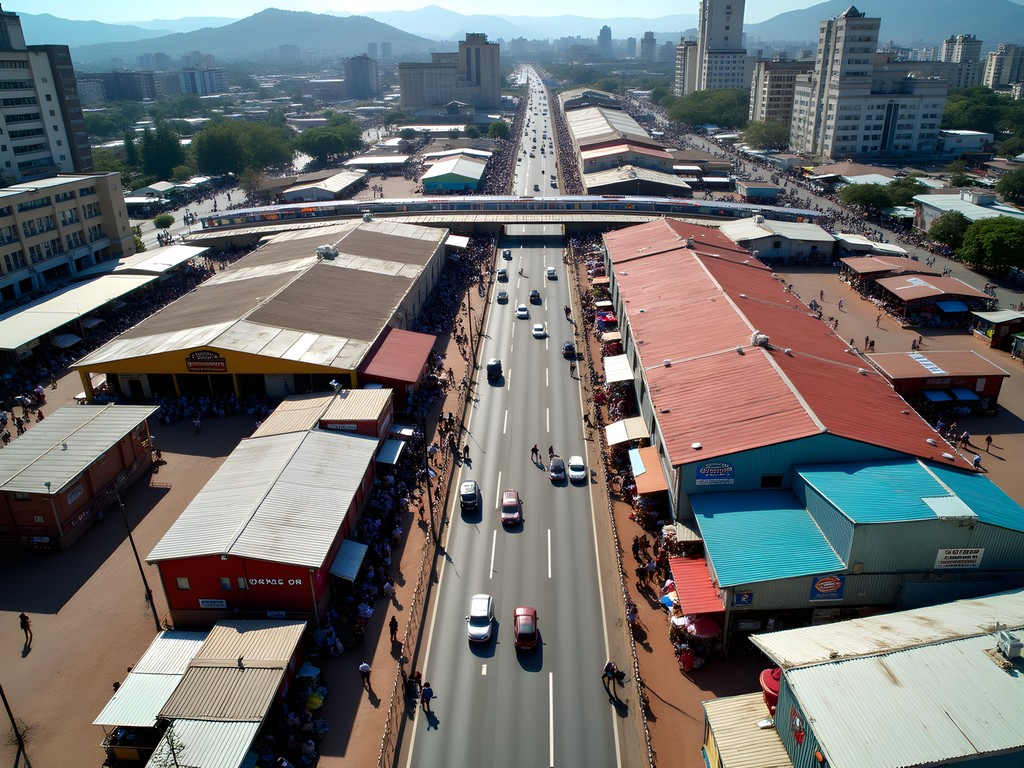
💡 Pro Tips
- Hire a local guide for deeper insights into the markets' cultural significance
- Visit on weekday mornings to avoid the most intense crowds
- Respect vendors' wishes regarding photography – always ask first
The Herb Traders Market: Traditional Knowledge in a Changing Climate
The Herb Traders Market within Warwick Junction resonates deeply with my professional work in climate adaptation. Here, approximately 700 traders sell indigenous medicinal plants and traditional remedies, forming one of the largest traditional medicine markets in southern Africa.
As I walk through narrow pathways lined with bundles of dried bark, roots, and leaves, I'm struck by how this market represents a living pharmacy of indigenous knowledge. Each bundle contains centuries of observation and experimentation, passed down through generations of healers. My research in climate-vulnerable regions has repeatedly shown how such traditional ecological knowledge often holds sophisticated understanding of ecosystem relationships that Western science is only beginning to comprehend.
I strike up a conversation with Mama Zanele, an elderly trader who has sold medicinal herbs here for over four decades. She explains how certain plants have become scarcer, forcing gatherers to travel further into rural areas. When I mention my work in climate adaptation, her eyes light up with recognition of the problem, though she frames it differently – as an imbalance between people and the natural world that requires restoration.
What fascinates me is how traders here have begun adapting. Some have started small cultivation projects in peri-urban areas, experimenting with growing traditionally wild-harvested species. Others have formed cooperatives to ensure sustainable harvesting practices. This market isn't just preserving knowledge – it's actively evolving it to meet contemporary challenges.
I purchase a small bundle of impepho (helichrysum), traditionally burned to communicate with ancestors but also containing compounds being studied for their anti-inflammatory properties. To document my experiences and the knowledge shared here, I use my field notebook – its water-resistant pages have proven invaluable during my travels through various climate conditions, especially in humid coastal environments like Durban's.

💡 Pro Tips
- Approach this market with respect – it's a place of healing and cultural significance
- If you're interested in traditional medicine, consider hiring a knowledgeable guide who can explain the cultural context
- Many traders speak Zulu primarily, so basic greetings in Zulu are appreciated
The Early Morning Market: Where Durban's Food Systems Converge
My exploration of Durban's markets wouldn't be complete without experiencing the Early Morning Market, one of the oldest continuously operating markets in South Africa. Dating back to 1910, this market has weathered apartheid, urban development pressures, and economic shifts to remain a vital link in Durban's food system.
I arrive just after sunrise, when the market pulses with its most intense energy. Farmers from surrounding rural areas have already unloaded trucks filled with produce – pyramids of tomatoes, bundles of spinach, and sacks of potatoes line the stalls. What strikes me immediately is the predominance of women traders, many of whom have inherited their stalls and customer relationships from mothers and grandmothers.
Through my climate change lens, I'm particularly interested in how this market facilitates short food supply chains. Produce travels minimal distances compared to supermarket distribution systems, significantly reducing carbon emissions associated with transportation. The market also creates economic resilience by connecting small-scale farmers directly with urban consumers – exactly the kind of adaptive food system we need in a climate-uncertain future.
I meet Thandi, a trader who has operated here for thirty years. She explains how weather patterns have become increasingly unpredictable, affecting growing seasons and harvest quality. Yet the direct farmer-to-market relationship allows for flexibility that industrial agriculture lacks. When certain crops fail, substitutions appear seamlessly.
The market isn't just about transactions – it's a social institution. Conversations flow in a mix of Zulu, English, and other languages. Regular customers inquire about family members, discuss politics, and share recipes. I purchase a bundle of imifino (wild greens) and am promptly instructed on how to prepare them properly by the woman who sells them to me.
To capture the vibrant colors and textures of the produce, I use my compact camera. Its excellent low-light performance handles the market's mixed lighting conditions beautifully, and its unobtrusive size doesn't disrupt the natural flow of market activities. When documenting community spaces like this, having a camera that doesn't create a barrier between myself and the people I'm interacting with is essential.
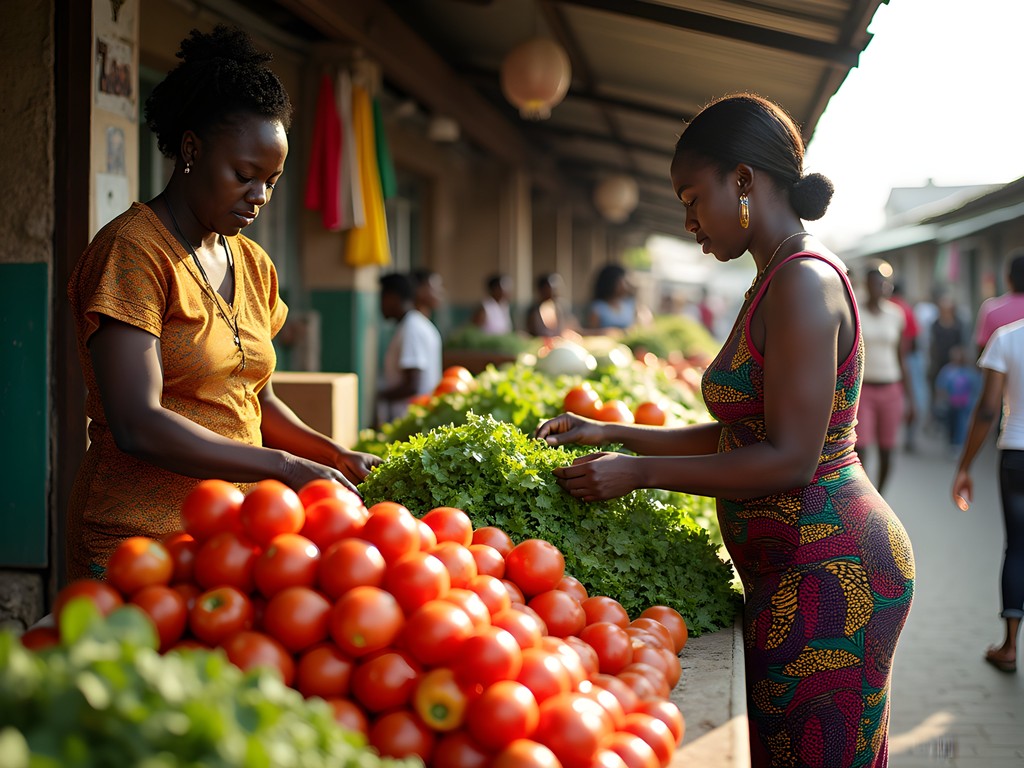
💡 Pro Tips
- Visit between 6-8am for the most authentic experience when wholesale trading is at its peak
- Bring your own shopping bag or basket
- Try the street food available around the market perimeter – especially the bunny chow, a Durban specialty
Connecting Through Craft: The Bead Market Experience
The Bead Market at Warwick Junction holds special significance for me as someone deeply interested in how traditional crafts maintain cultural continuity. Here, tiny glass beads become vehicles for storytelling, identity, and economic empowerment.
Durban's beadwork tradition emerges from Zulu cultural practices where specific colors and patterns communicate messages about age, marital status, and regional identity. What many visitors don't realize is that this isn't simply decorative art – it's a sophisticated visual language with deep cultural roots.
I spend a morning with Sibongile, a master beadworker who creates elaborate ceremonial pieces as well as more contemporary designs for tourists. She demonstrates how she strings the tiny beads with remarkable speed, her fingers dancing through patterns memorized through years of practice. "Each region has its own signature," she explains, showing me how coastal Zulu beadwork differs from inland styles through color preferences and pattern structures.
What I find most inspiring is how the market has become a place of intergenerational knowledge transfer. Young women learn alongside elders, adapting traditional techniques to create pieces that appeal to contemporary tastes while maintaining cultural authenticity. This adaptive approach mirrors what successful climate resilience looks like in other contexts – honoring traditional knowledge while evolving to meet changing circumstances.
I'm drawn to a beautiful beaded collar necklace that incorporates traditional geometric patterns in turquoise, white, and black. Sibongile explains that these colors traditionally represent water, purity, and strength – a combination that resonates with my own connection to water as someone raised near the sea in New Zealand. The piece becomes not just a souvenir but a meaningful connection between two indigenous traditions that value water as a sacred element.
To carry my market purchases and keep essentials organized during my explorations, my packable daypack has proven invaluable. It weighs almost nothing when folded into its own pocket but expands to hold market treasures while leaving my hands free to examine crafts and take photographs. For market exploration across multiple continents, this ultralight pack has become an essential part of my travel kit.
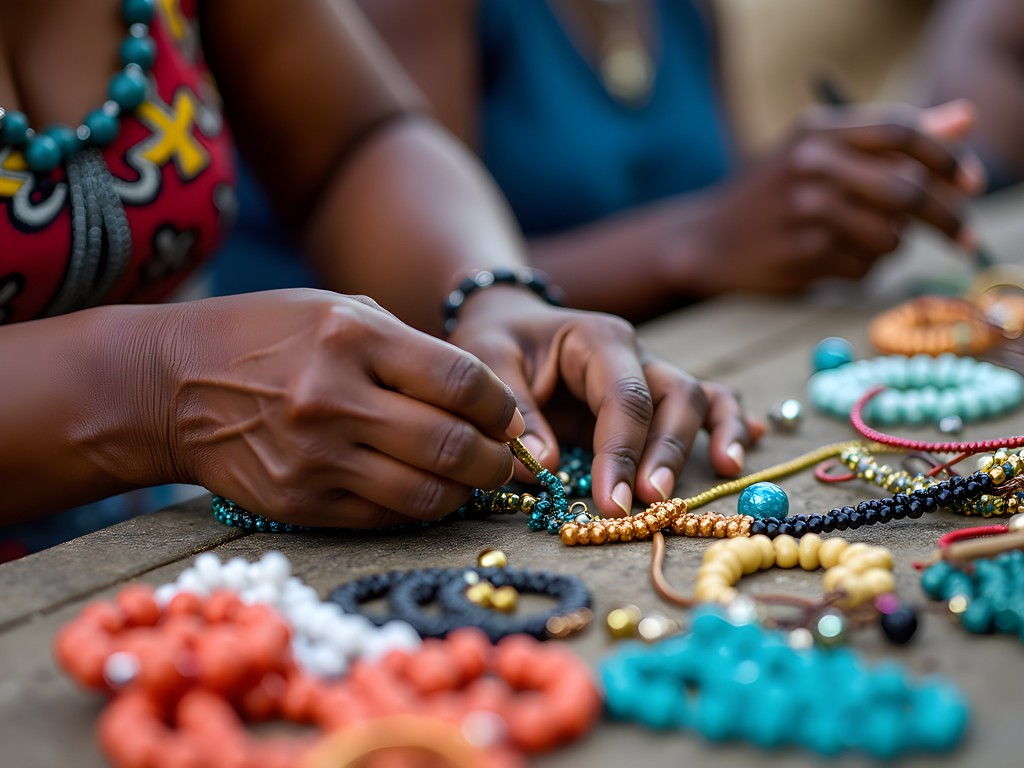
💡 Pro Tips
- Take time to learn about the meaning behind bead patterns – each color and arrangement has cultural significance
- Quality beadwork requires fair pricing – extremely cheap pieces often indicate exploitation somewhere in the supply chain
- Consider commissioning a small custom piece if you're staying in Durban for several days
Final Thoughts
As I leave Warwick Junction, bags filled with spices, beadwork, and a small bundle of medicinal herbs, I reflect on how Durban's markets embody the concept of kotahitanga – the Māori principle of unity through diversity. These spaces aren't merely commercial; they're living archives of cultural knowledge adapting to contemporary challenges. In my climate work across vulnerable regions, I've seen how traditional knowledge systems often hold sophisticated solutions to modern problems. Durban's markets demonstrate this beautifully – sustainable short food supply chains, waste reduction practices, and cultural preservation operating within economic systems that support thousands of families. Whether you're a casual visitor or a dedicated market enthusiast, I encourage you to approach these spaces with curiosity and respect. The stories behind each stall, each craft, and each bundle of herbs represent generations of resilience and adaptation – qualities we all need to cultivate in our changing world.
✨ Key Takeaways
- Durban's markets represent living cultural heritage that continues to adapt and evolve
- Markets like Warwick Junction demonstrate sustainable economic models that support thousands of families
- The knowledge preserved in these spaces – from traditional medicine to craft techniques – offers valuable insights for contemporary sustainability challenges
📋 Practical Information
Best Time to Visit
year-round, though early mornings (6-9am) offer the most authentic experience
Budget Estimate
R100-300 per person for market exploration and small purchases
Recommended Duration
Half-day for each market area, full weekend to explore thoroughly
Difficulty Level
Easy, Though Navigation At Warwick Junction Can Be Challenging For First-Timers


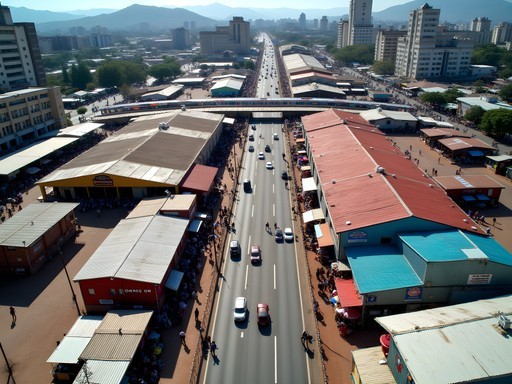

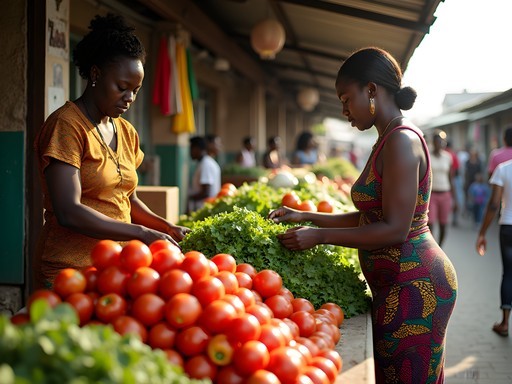







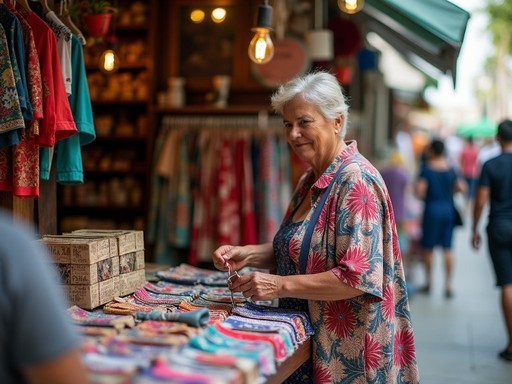
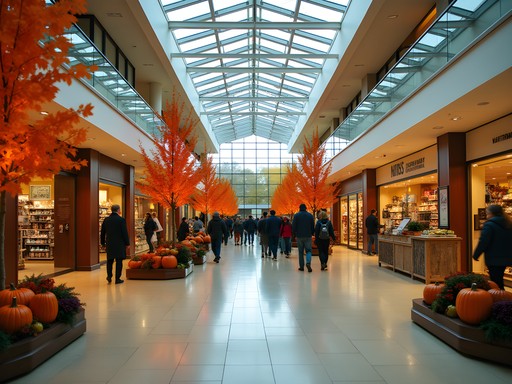

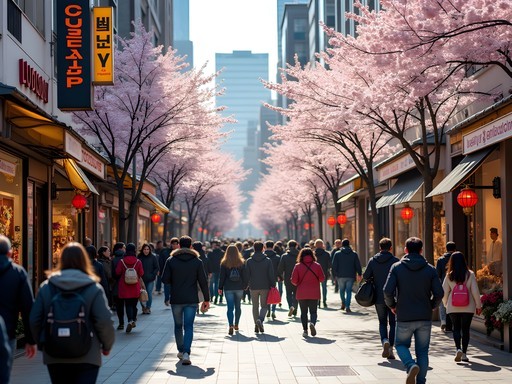
Comments
Megan Martin
Fantastic post, Leah! I visited these markets while in Durban for a business conference last year and was blown away by the sensory experience. For anyone planning to go: early mornings are best at Warwick Junction (around 7am) when produce is freshest and it's less crowded. The Herb Traders Market was particularly fascinating - I had a wonderful conversation with an older woman who explained traditional Zulu medicinal uses for plants I'd never heard of. One tip: bring small denominations of rand and be ready to bargain respectfully.
TravelBug89
Thanks for the early morning tip! Planning my first trip to SA in October. Did you feel safe walking around there?
Megan Martin
Yes, but I wouldn't go alone - either with a friend or take one of the organized walking tours. Common sense precautions apply like in any big city market. The vibe is bustling but friendly!
summerpro
Just got back from Durban last week and Victoria Street Market was a highlight! Those spices are no joke - I bought some curry powder that nearly blew my head off when I cooked with it back home. The beadwork section was amazing too. Did anyone else feel a bit overwhelmed at Warwick Junction though? I wasn't sure which of the nine markets to focus on with limited time.
Megan Martin
Warwick Junction can definitely be overwhelming! I recommend hiring a local guide - makes all the difference for navigating and understanding the cultural context. The Bovine Head Market is fascinating but not for the squeamish!
summerpro
Good call on the guide! Wish I'd thought of that. Did you feel safe there? I kept my bag close but everyone was actually super friendly.
Megan Martin
I felt safe with a guide, but it's always smart to be cautious in busy markets anywhere. I used my anti-theft crossbody which was perfect - not obvious but gave peace of mind!
islandperson
Just got back from Durban last week and followed your market recommendations - wow! The herb market was incredible. I was fascinated by how the traditional healers could identify each plant and explain its use. One older woman showed me her notebook with decades of plant knowledge passed down through generations. It's sad to hear some plants are becoming harder to find due to climate change. The spice merchants at Victoria Street Market let me sample so many different curry powders before buying. Definitely bring an extra bag for all your purchases - I came home with way more than planned!
nomadfan
Pro tip for anyone visiting: learn a few basic Zulu greetings. The vendors really appreciate it and you'll get much better prices!
George Hayes
We took our kids (10 and 12) to Durban last summer and these markets were actually their favorite part of the trip! The sensory overload of colors, sounds and smells was like nothing they'd experienced before. My daughter still talks about the bead vendors who showed her how to make traditional Zulu bracelets. For families visiting, I'd suggest bringing a crossbody bag to keep essentials secure while having hands free to browse. Also worth noting - many vendors appreciated small denominations of rand rather than large bills. The street food scene around the markets is incredible too - don't miss trying the samoosas!
nomadfan
How did your kids handle the crowds? My 9-year-old gets overwhelmed easily but I really want to show her these markets.
George Hayes
We went first thing in the morning (around 8am) when it was less crowded. Also broke it into shorter visits over two days rather than one marathon session. That helped a lot with the sensory overload!
nomadninja6052
That photo of the bead market is stunning! The colors!
dreamwanderer
Those herb traders look fascinating! Did you buy any medicinal herbs? What were they for?
islandperson
Not the author but when I visited, I bought some rooibos blends and something called 'impepho' which the seller said was for spiritual cleansing. Fascinating cultural experience!
Megan Martin
I visited Victoria Street Market last year during a business trip and was absolutely blown away by the sensory experience. The spice merchants were so knowledgeable! One gentleman spent nearly 30 minutes explaining different curry blends to me. I'd recommend going early morning to avoid crowds, especially at Warwick Junction. Also, did you try any of the street food near the Early Morning Market? Those bunny chows were life-changing!
nomadfan
How was safety at Warwick Junction? I've heard mixed things.
Megan Martin
I felt comfortable during daytime hours, but I did go with a local guide which I'd recommend for first-timers. Keep valuables secure and be aware of your surroundings, just like any busy market globally.
adventuremaster
Those spice markets look incredible! Adding this to my bucket list.
redphotographer
Great post! I'm heading to Durban next month. How easy is it to get from Victoria Street Market to Warwick Junction? Is it walkable or should I take a taxi?
Leah Dixon
Thanks for reading! They're actually quite close, about a 10-15 minute walk, but I'd recommend taking an Uber between them just to be safe, especially if you're carrying purchases. The markets are in different areas of the city center, and some blocks in between can be a bit sketchy.
redphotographer
Perfect, thanks for the advice! Any must-buy spices you'd recommend picking up?
Leah Dixon
Definitely get some Durban curry powder blends - they're unique to the region! Also look for cardamom pods, star anise, and if you can find it, a spice blend called 'mother-in-law exterminator' (it's hilariously hot). The vendors are super friendly and will let you smell everything before buying.
Venture X
Premium card with 2X miles, $300 travel credit, Priority Pass